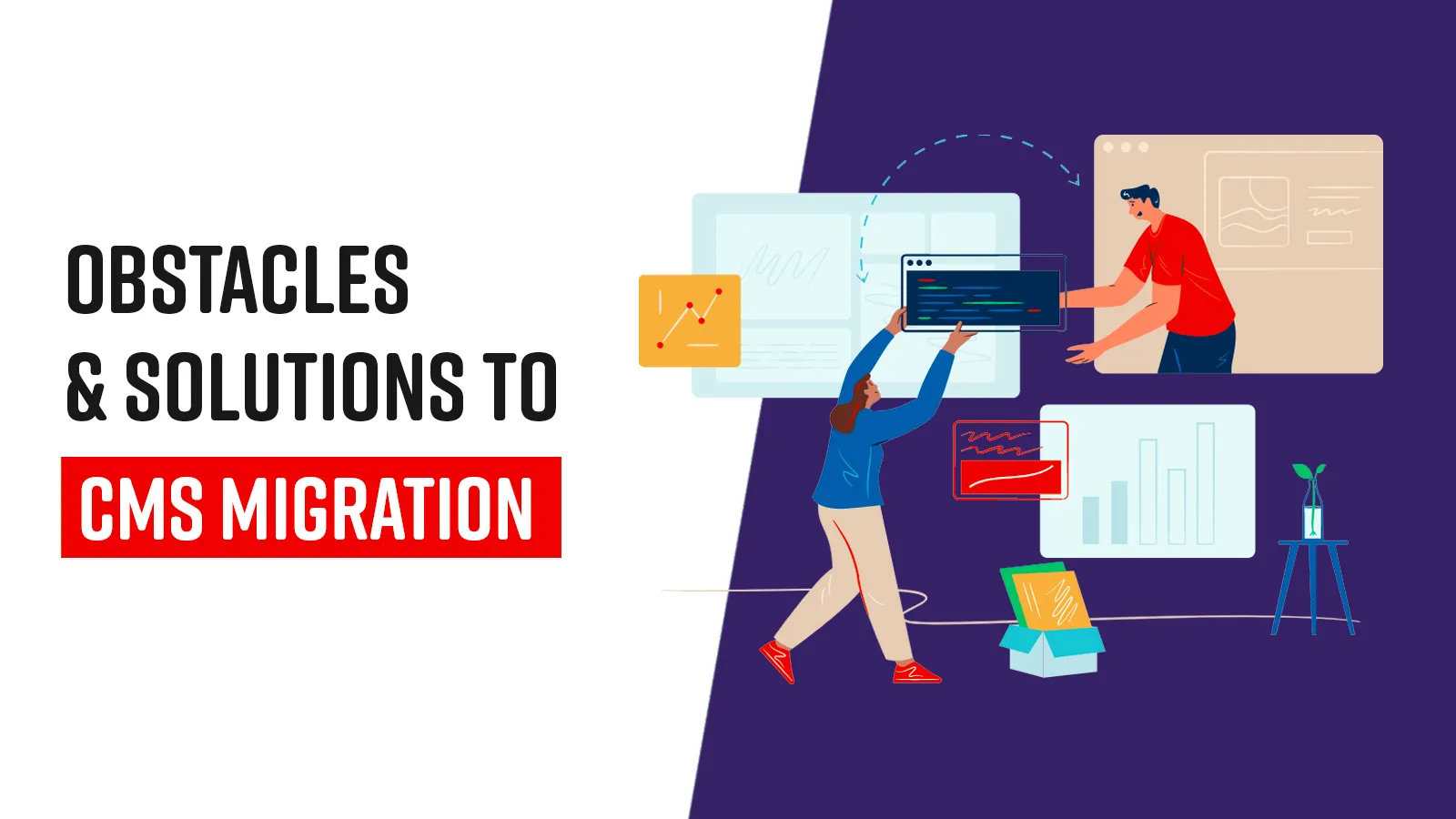CMS migration is one of the most critical steps for an organization. Therefore there goes a meticulous amount of hard time, effort and planning. Migration can be of various kinds including transferring data from HTTP to HTTPS, from subdomain to a subfolder, from an existing domain to a new one, and finally from the present content management system to a new one. In this article, we will discuss five obstacles to complete CMS migration for the entire website, and how to overcome them.
Key obstacles and barriers -
Downtime concerns that may cost bounty
About 70% of the professionals across the world haven’t yet calculated how much it may cost for their site to remain down on an hourly basis. About one-third of the 2000 European IT professionals surveyed for the State of Resilience Report say that they experienced about six or more hours of downtime during CMS migration. That’s a lot, especially for e-commerce or financial services businesses. Unplanned downtime can cost a company its reputation, and substantial direct loss in revenue.
Data handling
Data migration is a huge project with high risk . It forms a major barrier to CMS migration because 38% of the migration projects often result in failure. Apart from data migration, data quality concerns also remain at the heart of the migration project. Inconsistency, inaccuracy and data loss are some issues about data handling. We’ve categorized data handling obstacles in two parts- data migration obstacles and data quality barriers.
| Barriers of Data Migration | Barriers of Data Quality |
| Lack of knowledge about source data | Redundant or obsolete content |
| Not estimating data analysis properly | No lifecycle considerations (migrating data that has already met its retention, or there aren’t reasons enough to continue with that data) |
| Absence of the integrated processes | Missing metadata |
| Lack of specification validation | Inconsistent metadata due to use of diverse data structures |
| Failure for implementation validation | |
| Delay in evaluating final results | |
| No collaboration | |
| Improper use of expertise |
Lack of planning
Most organizations go for frequent migration either after every 5 years, or on an ad hoc basis. This means that there’s a lack of migration schedule and predictability, which often results in failure. Due to lack of planning organizations suffer staff overtime or downtime, which may cost them bountiful.
Website migration to the new CMS may take about five business days, depending upon the size of the existing website. Survey done by the State of Resilience Report suggests that the CMS migration project takes an average of 9-24 hours of the staff time. However, about a quarter of the respondents also said that their site took 25-100 hours for CMS migration. Inability for CMS migration and starting applications on target CMS in stipulated time frame may stem from inept early testing, which results in cost overruns and IT hurdles.
SEO risks
CMS migration comes with SEO risks. The question here isn’t “if migration will hurt the SEO,” but “how much will it hurt.” Inefficient migrations may result in losing focus on key SEO metrics, such as bounce rate, Referral traffic source, average page loading time.
Some obstacles concerning SEO may be due to the following reasons-
- Not keeping the older URL structures
- Having different rules or templates for H1 Tags and Meta Tags
- New CMS having a different methodology for service files, which include robots.txt and XML sitemap
- Using plugins in existing CMS that do not work in target CMS
Lack of technical know-how
Most organizations lack the required software tools to migrate to target CMS. This is among the most common migration failures or obstacles of successful moving. CMS migration isn’t a target-and-fire approach. It requires experienced technical know-how and calls for IT resilience, planning and testing at each stage, and better practices and processes adoption. Advanced technical skills help with key migration challenges such as-
- File format issues: including proprietary format, complex format, linked format, unknown format, and duplicate files.
- System dependency issues: including integrated systems, reports, process dependencies, and bandwidth issues.
- Data quality issues: as discussed in point #2
- Process issues: including accuracy, quality control, duration and timing, communication, and users.
How to overcome hurdles: Migration Checklist
About 83% of the organizations carrying out data migration end up either failing the migration project, or overrunning the costs, according to the Research Gate report. However, innovating and changing is an essential part of an organization's growth, which is why a migration checklist at different stages is a must. Overcoming CMS migration obstacles can be divided broadly into three categories with a migration checklist namely pre, post and during migration.
Pre-Migration
The checklist below helps organizations in preparing ahead of the migration to spot potential roadblocks and establishing activities that must be done.
- Building migration team and notifying employees
- Performing content audit, Creating content inventory and Defining content strategy
- Setting up data for proper mapping, Having thorough data assessment
- Defining realistic migration plan
- Assessing security
- Analysing target CMS system
- Data backup & old website crawling
During Migration
After an organization has done preparations for CMS migration, they can move to the core task of migration with the following checklist.
- Analysing data architecture on source and target CMS
- Set up your target CMS
- Create contingency plans and backups
- Carry out migration and transfer content to target CMS
- Pro-Tip: Always have a Plan B with all scenarios of ‘what-ifs’. This should ideally be done with a contingency plan for each step.
Post-Migration
After you’ve moved your content to the target CMS it’s still not the time to sit back and relax. Here’s the post-migration checklist that must be followed as a final blow to the nail so as to ensure fixation of the project.
- Testing for integrity and data accuracy
- System and data optimization
- Monitoring new CMS for content reformatting, fixing broken URLs, checking crawl errors, checking website speed (especially for SEO), and restructuring website elements
- Decommissioning old legacy CMS
- Train and educate personnel/ end user for new CMS
Conclusion
CMS migration is a challenging process that requires proper planning and a good execution strategy. The cost of CMS migration largely depends upon the website size, and the team members involved. Hiring a team of experts with proven technical expertise, and letting the company you’ve chosen for migration handle all your needs should be the way ahead.



